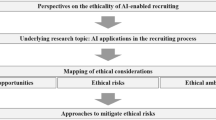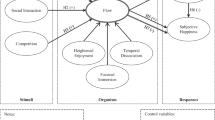Abstract
eCoaching platforms have become powerful tools to support users in their day-to-day physical routines. More and more research works show that motivational factors are strictly linked with the user inclination to share her fitness achievements on social media platforms. In this paper, we tackle the problem of analyzing and modeling users’ contextual information and real-time training data by exploiting state-of-the-art classification algorithms, to predict if a user will share her current running workout on Facebook. By analyzing user’s performance, collected by means of an eCoaching platform for runners, and crossing them with contextual information such as the weather, we are able to predict with a high accuracy if the user will post or not on Facebook. Given the positive impact that social media posts have in these scenarios, understanding what are the conditions that lead a user to post or not, can turn the output of the classification process into actionable knowledge. This knowledge can be exploited inside eCoaching platforms to model user behavior in broader and deeper ways, to develop novel forms of intervention and favor users’ motivation on the long term.

Similar content being viewed by others
Notes
The reason behind our choice to consider only users that posted at least a workout on Facebook is that the users who never posted a result cannot provide any ground truth in the classification process, regarding the conditions under which they post or not; in the training phase of a classification algorithm this information is key, since it provides instances of the “posted” class.
The considered timespan is due to limitations enforced by the third-party services providers.
As shown in Table 1, the trees returned by the algorithm have maximum depth 8, which would allow a motivational algorithm to provide compact explanations to the users on what are the conditions that will lead them to post or not.
References
Aral, S., Nicolaides, C.: Exercise contagion in a global social network. Nat. Commun. 8, 14753 (2017)
Boratto, L., Carta, S., Fenu, G., Manca, M., Mulas, F., Pilloni, P.: The role of social interaction on users motivation to exercise: a persuasive web framework to enhance the self-management of a healthy lifestyle. Pervasive Mobile Comput. 36, 98–114 (2017a)
Boratto, L., Carta, S., Mulas, F., Pilloni, P.: An e-coaching ecosystem: design and effectiveness analysis of the engagement of remote coaching on athletes. Pers. Ubiquitous Comput. 21(4), 689–704 (2017b). https://doi.org/10.1007/s00779-017-1026-0
Brown, I., Mues, C.: An experimental comparison of classification algorithms for imbalanced credit scoring data sets. Expert Syst. Appl. 39(3), 3446–3453 (2012)
Curry, S.J.: eHealth research and healthcare delivery. Am. J. Prev. Med. 32(5), S127–S130 (2007)
Fernández-Delgado, M., Cernadas, E., Barro, S., Amorim, D.: Do we need hundreds of classifiers to solve real world classification problems? J. Mach. Learn. Res. 15(1), 3133–3181 (2014)
Fogel, J., Nehmad, E.: Internet social network communities: risk taking, trust, and privacy concerns. Comput. Hum. Behav. 25(1), 153–160 (2009)
Gui, X., Chen, Y., Caldeira, C., Xiao, D., Chen, Y.: When fitness meets social networks: investigating fitness tracking and social practices on werun. In: Proceedings of the 2017 CHI Conference on Human Factors in Computing Systems, pp. 1647–1659. ACM (2017)
Lemaître, G., Nogueira, F., Aridas, C.K.: Imbalanced-learn: a python toolbox to tackle the curse of imbalanced datasets in machine learning. J. Mach. Learn. Res. 18(17), 1–5 (2017)
Marketingland.Com: Nearly 80 percent of social media time now spent on mobile devices (2016). https://marketingland.com/facebook-usage-accounts-1-5-minutes-spent-mobile-171561. Accessed 1 Aug 2018
Pilloni, P., Piras, L., Carta, S., Fenu, G., Mulas, F., Boratto, L.: Recommender system lets coaches identify and help athletes who begin losing motivation. Computer 51(3), 36–42 (2018)
Rathore, S.S., Kumar, S.: A decision tree logic based recommendation system to select software fault prediction techniques. Computing 99(3), 255–285 (2017)
Sakr, S., Elshawi, R., Ahmed, A.M., Qureshi, W.T., Brawner, C.A., Keteyian, S.J., Blaha, M.J., Al-Mallah, M.H.: Comparison of machine learning techniques to predict all-cause mortality using fitness data: the henry ford exercise testing (fit) project. BMC Med. Inf. Decis. Making 17(1), 174 (2017)
Sakr, S., Elshawi, R., Ahmed, A., Qureshi, W.T., Brawner, C., Keteyian, S., Blaha, M.J., Al-Mallah, M.H.: Using machine learning on cardiorespiratory fitness data for predicting hypertension: the henry ford exercise testing (fit) project. PLoS ONE 13(4), e0195344 (2018)
Schudy, S., Utikal, V.: ‘You must not know about me’-on the willingness to share personal data. J. Econ. Behav. Organ. 141, 1–13 (2017)
Smartinsights.Com: Statistics on consumer mobile usage and adoption to inform your mobile marketing strategy mobile site design and app development (2018). https://www.smartinsights.com/mobile-marketing/mobile-marketing-analytics/mobile-marketing-statistics/. Accessed 1 Aug 2018
Statista.Com: Running & jogging—statistics & facts (2018). https://www.statista.com/topics/1743/running-and-jogging/. Accessed 1 Aug 2018
Stone, M.: Cross-validatory choice and assessment of statistical predictions. J. R Stat. Soc. Series B(Methodological), 111–147 (1974)
Stragier, J., Evens, T., Mechant, P.: Broadcast yourself: an exploratory study of sharing physical activity on social networking sites. Media Int. Aust. 155(1), 120–129 (2015)
Wiese, J., Kelley, P.G., Cranor, L.F., Dabbish, L., Hong, J.I., Zimmerman, J.: Are you close with me? Are you nearby? Investigating social groups, closeness, and willingness to share. In: Proceedings of the 13th International Conference on Ubiquitous Computing, UbiComp ’11, pp. 197–206. ACM, New York, NY, USA (2011). https://doi.org/10.1145/2030112.2030140
Zhang, R.: The stress-buffering effect of self-disclosure on facebook: an examination of stressful life events, social support, and mental health among college students. Comput. Hum Behav. 75, 527–537 (2017)
Zhu, Y., Dailey, S.L., Kreitzberg, D., Bernhardt, J.: Connecting social features of wearable fitness trackers with physical exercise. J. Health Commun. 22(12), 974–980 (2017)
Ziefle, M., Halbey, J., Kowalewski, S.: Users willingness to share data on the internet: Perceived benefits and caveats. In: Proceedings of the International Conference on Internet of Things and Big Data (IoTBD 2016), pp. 255–265 (2016)
Acknowledgements
The authors would like to thank Marika Cappai and Davide Spano for their contribution in this research work. This work is partially funded by Regione Sardegna under Projects AI4fit (Artificial Intelligence & Human Computer Interaction per l’e-coaching), through AIUTI PER PROGETTI DI RICERCA E SVILUPPO - POR FESR SARDEGNA 2014–2020, and NOMAD (Next generation Open Mobile Apps Development), through PIA—Pacchetti Integrati di Agevolazione “Industria Artigianato e Servizi” (annualità 2013).
Author information
Authors and Affiliations
Corresponding author
Additional information
Publisher's Note
Springer Nature remains neutral with regard to jurisdictional claims in published maps and institutional affiliations.
Rights and permissions
About this article
Cite this article
Boratto, L., Carta, S., Ibba, F. et al. Modeling real-time data and contextual information from workouts in eCoaching platforms to predict users’ sharing behavior on Facebook. User Model User-Adap Inter 30, 395–411 (2020). https://doi.org/10.1007/s11257-019-09229-4
Received:
Accepted:
Published:
Issue Date:
DOI: https://doi.org/10.1007/s11257-019-09229-4




